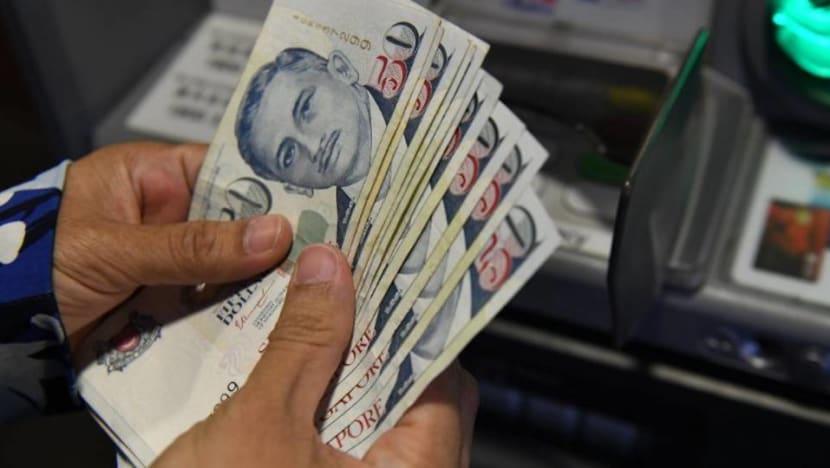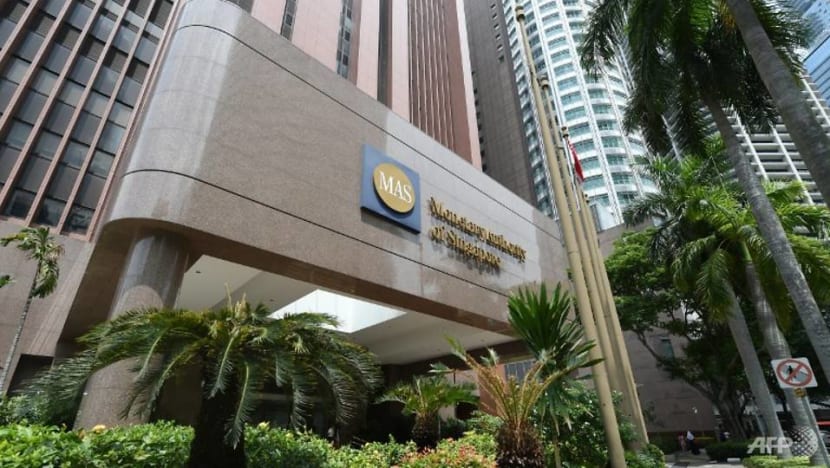commentary Commentary
Commentary: Low interest rates don’t necessarily mean we keep more cash in hand
As enticing and appealing as cash might be, the problem is that there is a cost associated with keeping it, says The Smart Investor CEO David Kuo.

A customer withdraws cash from an automated teller machine. (File photo: AFP/Roslan Rahman)
SINGAPORE: The world is awash with cash. We know this, almost intuitively, because many banks have cut interest rates on our saving accounts to almost zero as they discourage more savings – to reduce the amount of interest payments they accrue
What’s more, demand for bank loans have been subdued, meaning interest fees owed to banks are lower too.
In Singapore, bank loans declined to S$677.9 billion in August, which was the smallest bank lending since April 2019.
According to McKinsey & Company, governments around the world announced an unprecedented cash injection of US$10 trillion in the early months of the COVID-19 pandemic.
READ: Commentary: Rising debt in coronavirus-stricken economies - just how bad is it?
That was three times more than their response to the 2008 to 2009 global financial crisis.
These government stimulus packages included guarantees, loans, transfers to both companies and individuals, tax deferrals, and equity investments.
In many cases, governments have issued debt that in turn has been bought by central banks through the creation of fresh cash.
WHATEVER IT TAKES
The Federal Reserve has even gone so far as to say that it is committed to doing “whatever it takes” to keep the US economy afloat. It plans to do this by shifting its emphasis to an average inflation target of 2 per cent and a goal of maximum employment.
So, there should be no shortage of cash and no lack of available credit, either.
But what exactly is cash? Cash, also known as money, is legal tender. It is the medium by which we pay for our goods and services.
Even with the ubiquitous use of credit cards, debit cards, cheques, and electronic payment apps, cash is still needed to underpin these other popular payment methods.
We still need cash to settle our credit-card bills, to pay off our debts, and to perform transfer of funds, even if it is done electronically on our mobile phones.

So, the question is not whether we need cash but rather how much of the stuff should we hold.
As enticing and appealing as cash might be, the problem is that there is a cost associated with keeping it.
READ: Commentary: Loan sharks - who’s still borrowing from them in this day and age?
On the plus side, the main benefit of holding cash is that we can have total control over it. We can know, with absolute accuracy, how much of it that we have at any moment in time. What’s more, we can have immediate access to it whenever we want – easy liquidity.
THE HIDDEN DANGERS OF CASH
There is one caveat to that, though. In the aftermath of the global financial crisis, our Singapore current and savings accounts are insured by the Deposit Insurance Scheme of up to only S$75,000, if a bank or finance company should collapse. It is a layer of protection for small depositors.
But it doesn’t help anyone who has significantly more than that in their bank account. Reassuringly, there is a more important layer of protection.
In Singapore, the Monetary Authority of Singapore (MAS) has strict rules in place to ensure that banks and finance companies are well-managed, well-capitalised and have enough liquidity to meet any unforeseen needs.
READ: Commentary: Those who can afford it must spend more to save the economy
But there is another risk associated with consumers holding cash - inflation, which is a measure of the purchasing power of money. Every dollar that is held as cash could be worth less later because its buying power is being eroded by rising prices.
Even with a modest rate of inflation of 2 per cent, $100 today would only buy $98 worth of goods and services in a year’s time. It gets worse the longer we hold onto the cash. After 10 years, it would only be worth $81 in today’s money. After two decades, it will have lost nearly a third of its value.
OPPORTUNITY COST
There is also the missed opportunity of generating a better return on our money if we simply leave our savings as cash. We could instead lock our money away for a fixed period to, at least, earn some interest on our money.
For instance, in ascending order of risk, we could put our money into fixed-deposit accounts, certificates of deposits or investment-grade bonds. The interest earned might not entirely protect our money from inflation, but it could go a little way to lessen the impact of rising prices.

For instance, Singapore Savings Bonds pay between 0.23 per cent per annum and 1.79 per cent per annum for investments between one and 10 years.
That is higher than the current inflation rate of 0 per cent, which would preserve the buying power of our savings if inflation should remain at the current muted level.
But not if inflation should rise to around 5 per cent, which was the rate at which consumer prices were rising at just eight years ago.
READ: Commentary: Gold may have lost some of its shine but don’t write it off just yet
For risk-averse investors, those near-cash investments can be enticing. In terms of risk, fixed deposits and investment-grade bonds are some of the least risky of the four main asset classes.
Further up the risk ladder are property and shares. They are deemed riskier because we might not always recoup our initial investments. But the pay-off for the investor is the possibility of higher returns than either cash or bonds can deliver.
SAFE HOUSES?
Property prices tend to rise over time, though always not in a straight line.
According to the Urban Redevelopment Authority (URA), private home prices in Singapore as measured by the URA Property Index has risen from a reading of 8.9 in 1975 to 152.1 in 2020.
That equates to a compound annual increase of 7 per cent. The benefit of investing in property is leverage. Banks are more likely to lend money to buy a property because the loan is secured against the property itself.

Consequently, if we invest in property, which should exclude the houses that we live in, it could provide us with passive income. But the disadvantages include high transaction costs, regular maintenance, and void rental periods when the property is vacant.
READ: Commentary: Why that loan to buy that new house and car is cheaper now
Property is also illiquid. It is not easy to sell a property if we need cash quickly. An alternative to physical property are Real Estate Investment Trusts or REITs, which are dividend-paying shares that are focussed on property.
A WORLD OF CHOICES
Apart from REITs, there is an almost endless choice of shares to choose from that could protect us from the dangers of inflation.
But despite the threat, some investors still prefer the comfort of cash. According to a survey by DBS Group Holdings, its wealthy clients have increased cash holdings to about 40 percent of their portfolios in recent months, which is up from 30 percent before the pandemic.
According to Bloomberg, leading private equity companies are sitting on around US$1.6 trillion in cash.
READ: Commentary: Low interest rates could tempt more to borrow beyond their means
Clearly, some people believe that investing in a financial crisis, especially one that is underpinned by a pandemic, is not worth the risk. After all, no one can possibly know the timeline or the shape of a recovery.
In times like these, people are more likely to be loss-averse rather than just simply risk-averse – that is more likely to cut their losses.
But it is also important to appreciate that markets have always recovered over time. If you can’t wait for a recovery, then cash might be a good option.
As to whether cash is trash or king, it hinges on whether we believe that we will recover from COVID-19.
HOW MUCH CASH?
But that still doesn’t quite answer the question of how much cash we should hold. Thankfully, there is a rule of thumb that might help. It’s called “The rule of 100”. It’s not perfect, but it can still be a useful guide.
It states that the proportion of equities in our portfolios should be equal to 100 minus our age.
So, a 30-year-old should only hold 30 per cent cash, whilst the rest could be in the stocks or property. Someone who is 70 years of age could consider having 70 per cent cash and only 30 per cent in equities.
The idea behind the rule is simple: Younger people have a longer time horizon to recover from a setback in the stock market. Older folks don’t have that same luxury of time.
READ: Commentary: The US dollar will only fall faster and harder
The rule of thumb is not meant to be prescriptive. Instead, the life-styling sentiment behind it is clear.
As we grow older, we should think about moving more of our portfolios into less risky investments, even if it could mean lower overall returns.
But as average lifespans have increased, thanks to better diets and improved healthcare, we might have more time to recover from any market dips, which could mean we don’t quite need as much cash as the “rule of a hundred” would suggest.
As to how much in actual dollars and cents that should be, that is an entirely different discussion altogether.
David Kuo is the co-founder of The Smart Investor and previously the CEO of the Motley Fool Singapore.














